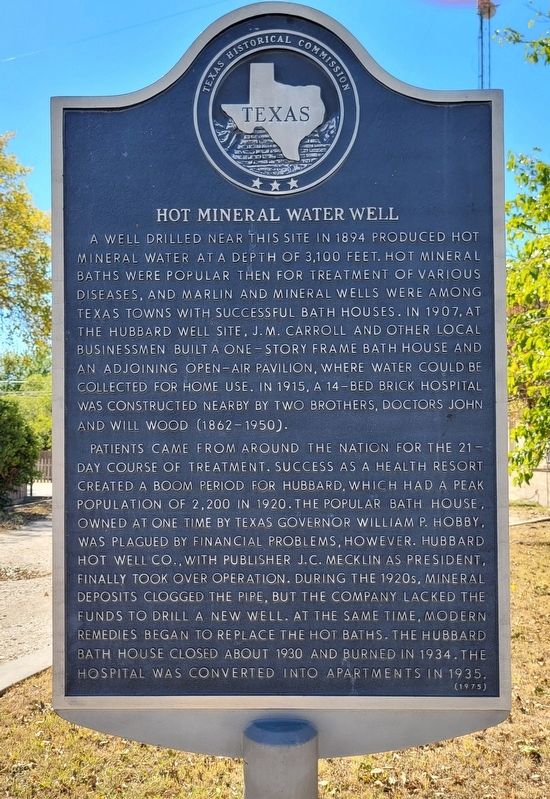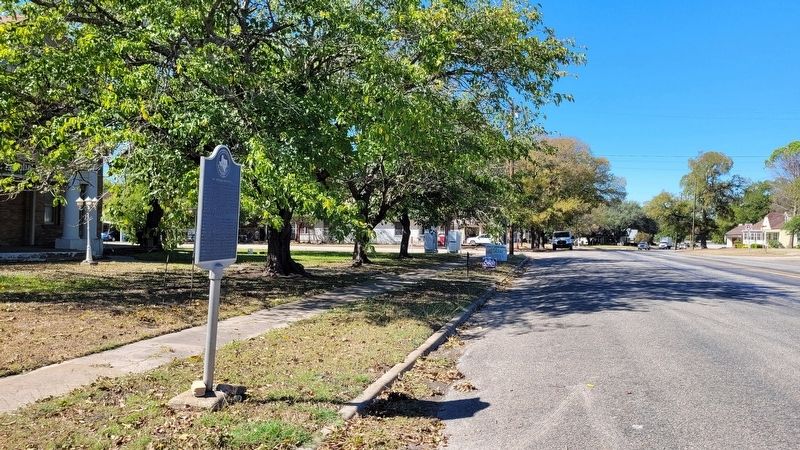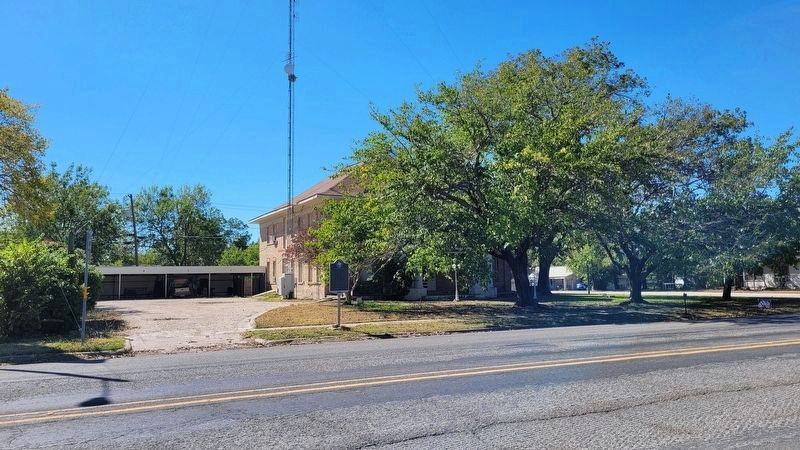Hubbard in Hill County, Texas — The American South (West South Central)
Hot Mineral Water Well
Patients came from around the nation for the 21 day course of treatment. Success as a health resort created a boom period for Hubbard, which had a peak population of 2,200 in 1920. The popular bath house, owned at one time by Texas Governor William P. Hobby, was plagued by financial problems, however. Hubbard Hot Well Co., with publisher J.C. Mecklin as president, finally took over operation. During the 1920s, mineral deposits clogged the pipe, but the company lacked the funds to drill a new well. At the same time, modern remedies began to replace the hot baths. The Hubbard Bath House closed about 1930 and burned in 1934. The hospital was converted into apartments in 1935.
Erected 1975 by Texas Historical Commission. (Marker Number 2569.)
Topics. This historical marker is listed in these topic lists: Entertainment • Industry & Commerce • Science & Medicine. A significant historical year for this entry is 1894.
Location. 31° 51.007′ N, 96° 47.98′ W. Marker is in Hubbard, Texas, in Hill County. Marker is at the intersection of North Magnolia Avenue and NW 7th Street, on the left when traveling north on North Magnolia Avenue. The marker is located along the west side of the highway. Touch for map. Marker is at or near this postal address: 600 North Magnolia Avenue, Hubbard TX 76648, United States of America. Touch for directions.
Other nearby markers. At least 8 other markers are within 4 miles of this marker, measured as the crow flies. Hubbard High School (approx. 0.2 miles away); Historic Bank Site (approx. 0.3 miles away); Hometown of Tris Speaker (approx. 0.3 miles away); Hubbard (approx. 0.3 miles away); First Methodist Church (approx. 0.3 miles away); The Hubbard City News (approx. 0.4 miles away); Fairview Cemetery (approx. 0.8 miles away); Former Site of Liberty Hill Settlement (approx. 3.7 miles away). Touch for a list and map of all markers in Hubbard.
Also see . . .
1. Hubbard, Texas. Wikipedia
Hubbard was named after Richard B. Hubbard, the 16th governor of Texas. He was on hand at the sales of the first town lots on August 11, 1881. The city was organized when the railroads were built through this section of the state. Its first bank was organized in 1881. In 1895 mineral water was discovered in Hubbard. This spawned several bath houses and a sanitarium. Hubbard's reputation as a health resort contributed to its population increase. On March 10, 1973, an F4 tornado destroyed about a third of Hubbard, including half of the business district, killing six people and injuring 77.(Submitted on October 29, 2022, by James Hulse of Medina, Texas.)
2. Mineral-Water Springs and Wells. Texas State Historical Association
From the early days of the Republic of Texas, mineral-water springs and wells attracted health seekers. Sam Houston bathed his wounds in the waters of Sour Lake in Hardin County and in the sulfur springs of Piedmont in Grimes County. Davy Crockett is said to have visited the Texas Sour Wells in Caldwell County. A German geographer and philosopher, Ernst Kapp, established a hydropathic institute in Sisterdale, Kendall County. Springs and wells varied in location, topography, vegetation, and properties such as temperature, mineral composition, and origin. About 100 years ago the appropriation of mineral waters for medicinal purposes grew so popular that thousands of people visited springs and wells yearly. More than 100 places developed into well-known resorts.(Submitted on October 29, 2022, by James Hulse of Medina, Texas.)
Credits. This page was last revised on October 30, 2022. It was originally submitted on October 29, 2022, by James Hulse of Medina, Texas. This page has been viewed 167 times since then and 46 times this year. Photos: 1, 2, 3. submitted on October 30, 2022, by James Hulse of Medina, Texas.


